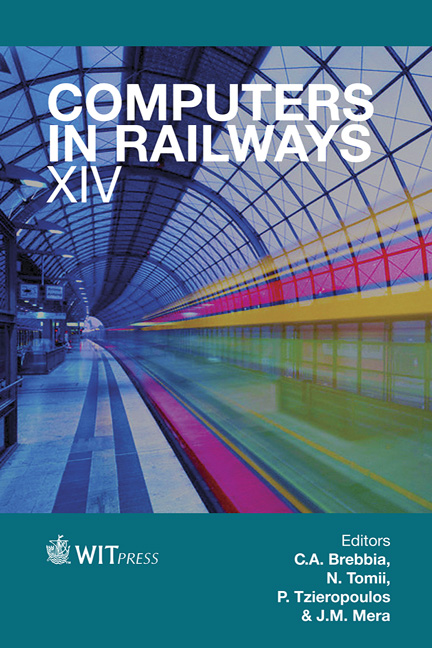The Impact Of Different Maximum Speeds On Journey Times, Energy Use, Headway Times And The Number Of Trains Required For Phase One Of Britain’s High Speed Two Line
Price
Free (open access)
Transaction
Volume
135
Pages
12
Page Range
485 - 496
Published
2014
Size
1,503 kb
Paper DOI
10.2495/CR140401
Copyright
WIT Press
Author(s)
D. Hasegawa, G. L. Nicholson, C. Roberts & F. Schmid
Abstract
The maximum speed of High Speed Rail (HSR) operations has increased over the past few years. Indeed, it is planned to operate the new High Speed Two (HS2) line in Britain at 330 km/h, once the first phase is completed in 2026. This will lead to very short journey times from London to Birmingham. However, as a direct result of the higher speeds, the energy used by HSR trains has increased, despite the significant technical advances in train construction over the past 50 years. In spite of a broad understanding of this issue, there has been no formal assessment as to the overall benefit of operating HSR trains at very high speeds. Also, as is the case for HS2, the construction of HSR lines is usually split into multiple phases, to reduce both the project management and financial risks. At partial opening, the length of the route is shorter than at full opening, so the ideal maximum speed could well be different. To date, there has been no specific study about the most effective operation during this period. Choosing a lower maximum speed of operation is a possible option for reducing energy use but this lengthens journey times, thus risking a reduction in the market share of HSR and an increase in the number of trains required. Conversely, increasing the line speed not only increases energy consumption but also the headway time of the line. In this paper, various maximum operating speeds for Phase One of HS2 are analysed by simulation, in terms of journey time, energy consumption, headway time and the number of trains required. Advantages and drawbacks of adopting a lower maximum speed are presented. Keywords: High Speed Rail, energy, headway, capacity, partial opening.
Keywords
High Speed Rail, energy, headway, capacity, partial opening.





